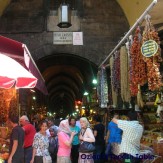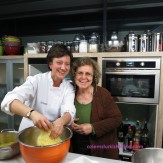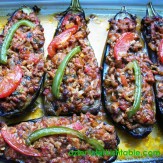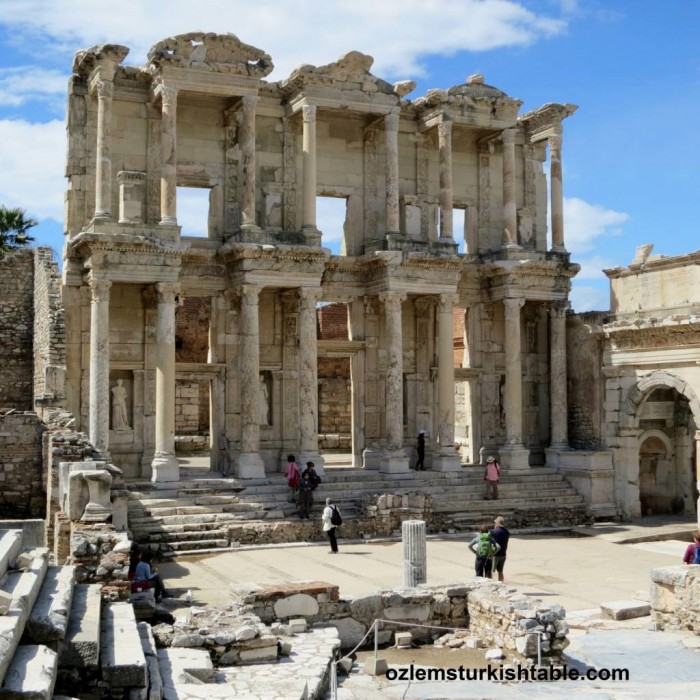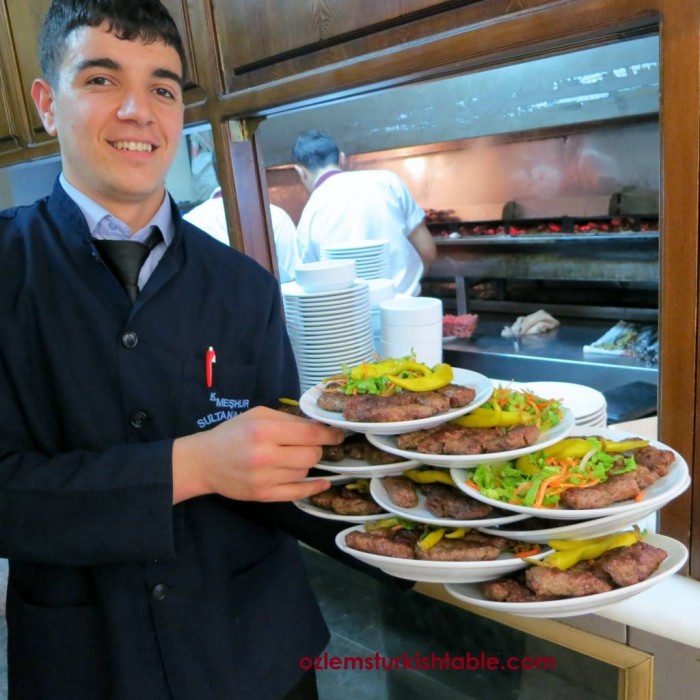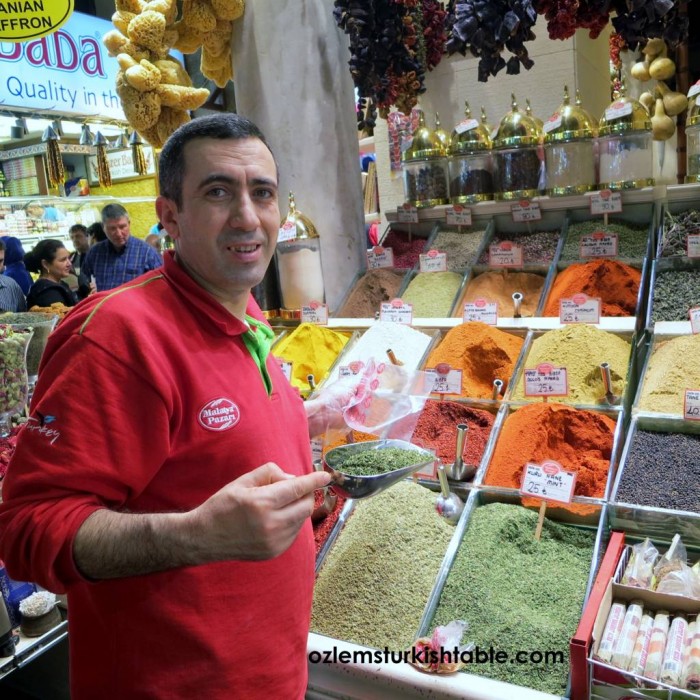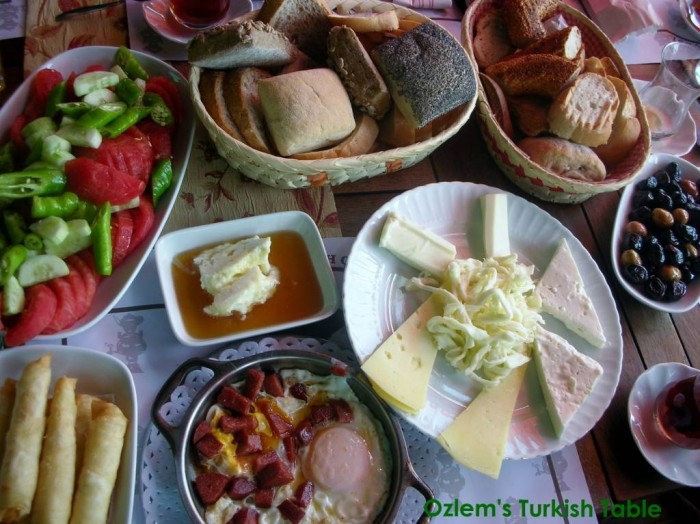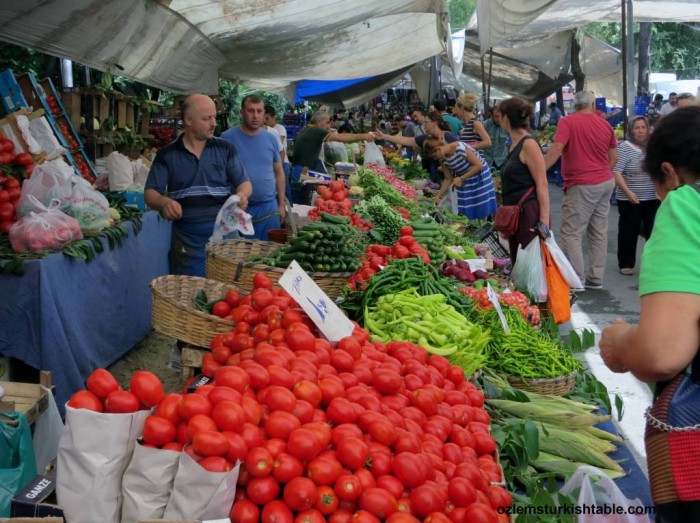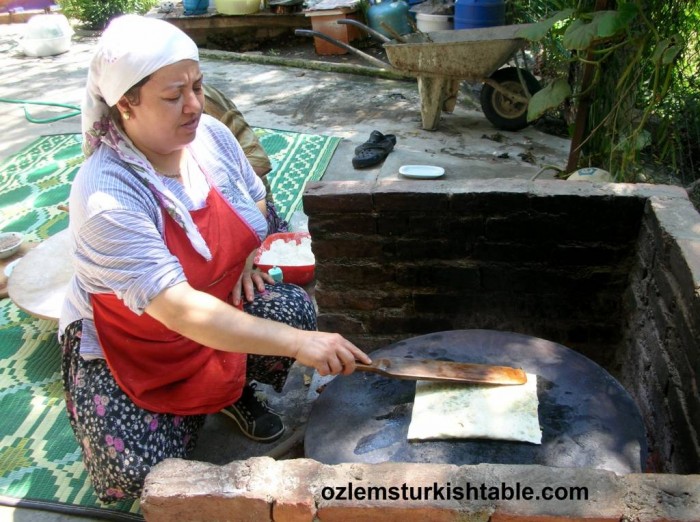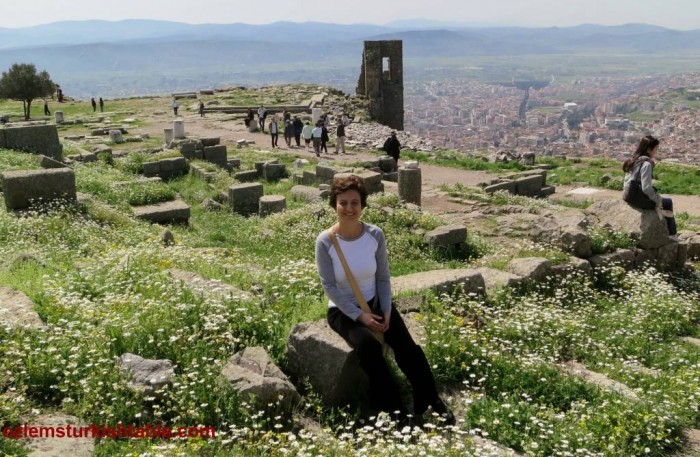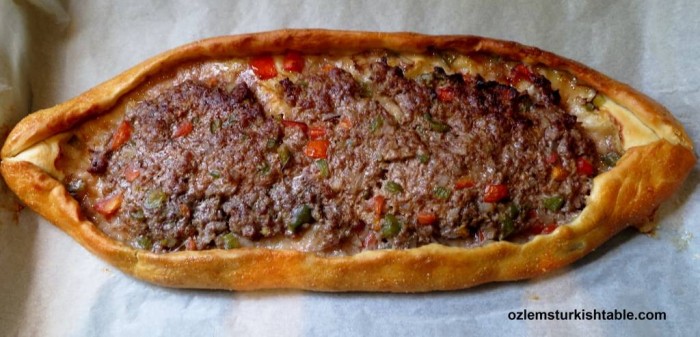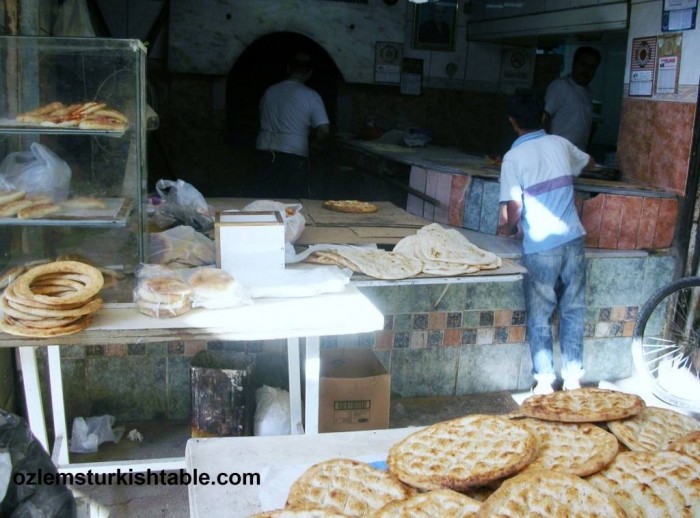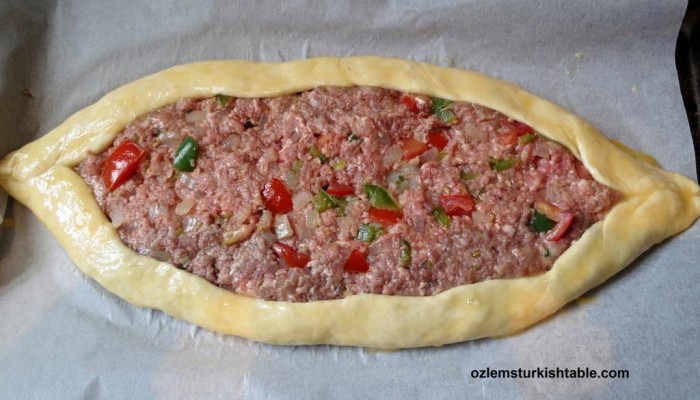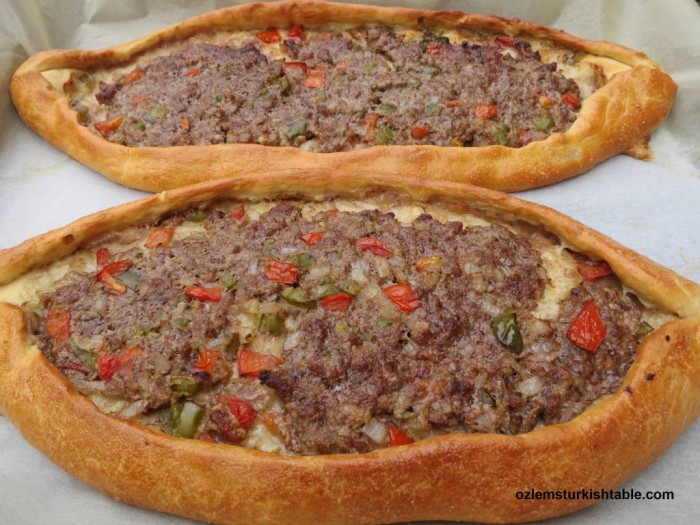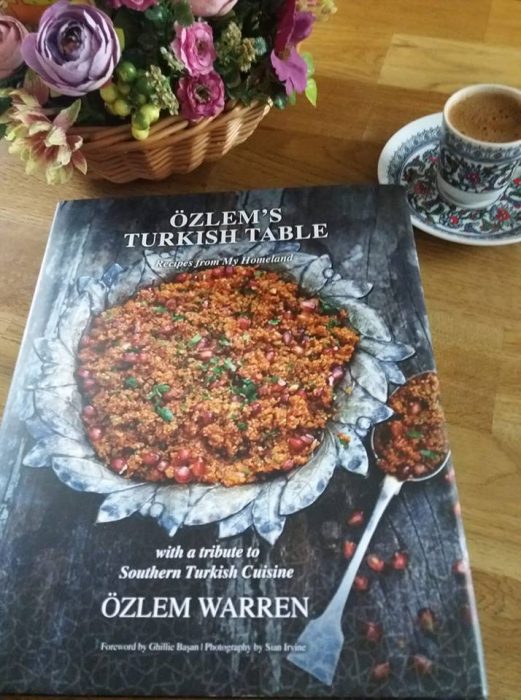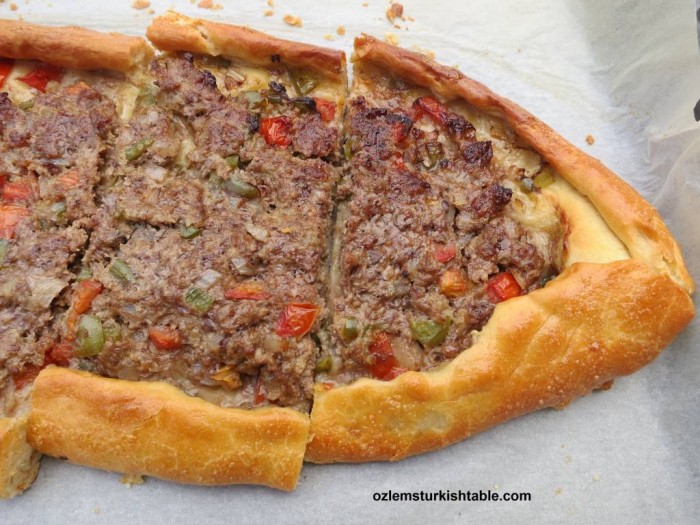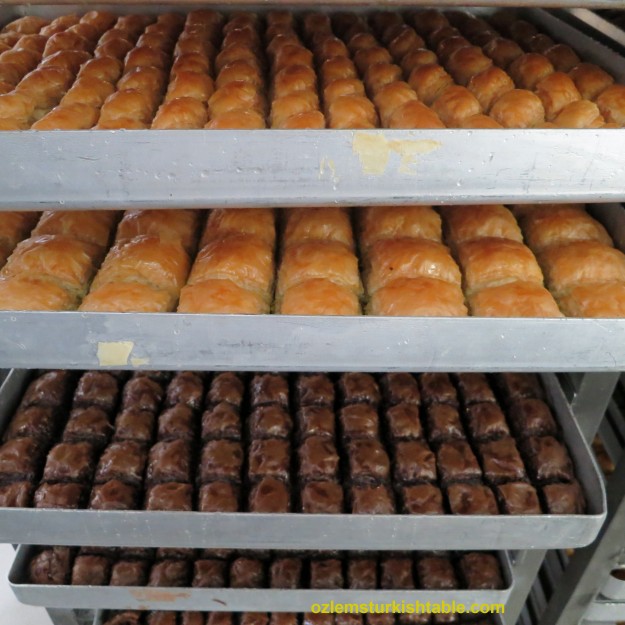
baklava with pistachios, walnuts – even with chocolate!
Baklava remains as one of the most popular desserts for most of us and we were delighted to have a chance to observe how the real thing is made during our culinary tour in Istanbul, back in April. Our destination was Gulluoglu Baklava in Karakoy, the master of baklava makers since 1800’s.
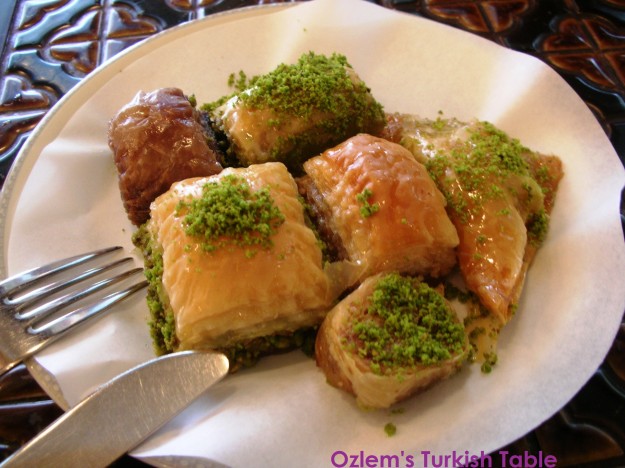
The irresistable baklava; we will have a go at it during my CM Turkish cooking class on 2nd August
What impresses me is the love and passion the Gulluoglu family have for their product and thrive to make each and every baklava an unforgettable experience. “Hear the crack”, says the 6th generation baklava maker Murat, from the Gulluoglu family, as he divides the piece of baklava with his fork while we tour around the production line; “that cracking sound is the sign of freshness, a sign of the finest baklava; a must for us. Good baklava leaves a heavenly taste in your mouth; it shouldn’t be very sweet and heavy; on the contrary it should be light enough to tempt you to eat a small plateful.”
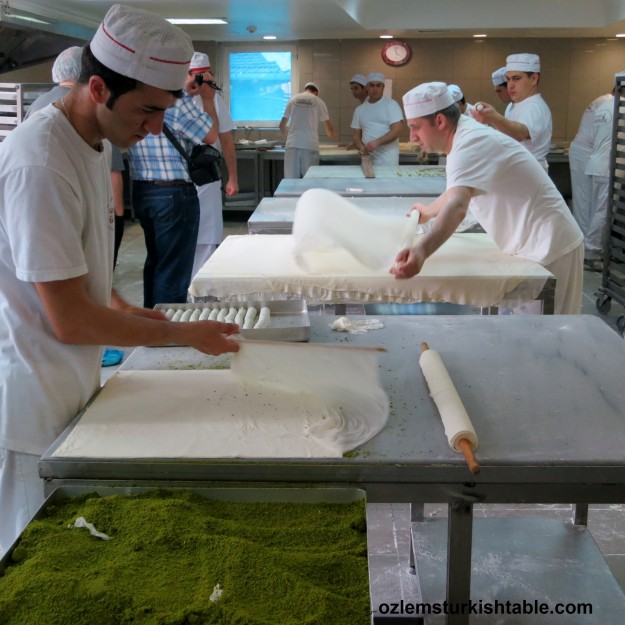
Hundred years of tradition; baklava masters, ustas, perfecting their art.
Karakoy Gulluoglu runs baklava demonstration sessions at their factory in Karakoy and watching the ustas, masters of baklava in action, is an unforgettable experience. When I say Masters, I mean it; each of the Ustas, Masters, spend 8-10 years at each phase of baklava making to perfect it; rolling the dough; turning the dough into the paper thin sheets of pastry, making the syrup, baking at the right heat..
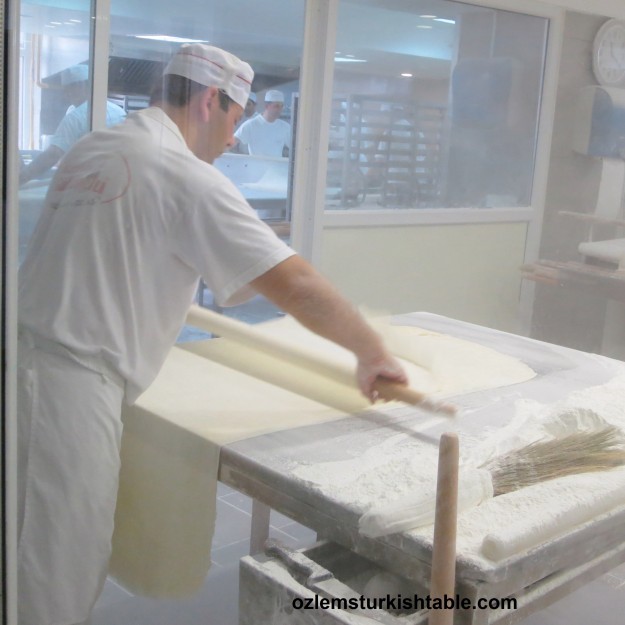
Clouds of flour worked in baklava dough to make the paper thin sheets of pastry
The very first thing that greets you here is the clouds of flour in the air to make that paper thin sheets of pastry for baklava, all “opened”, stretched by hand with an oklava, rolling pin.
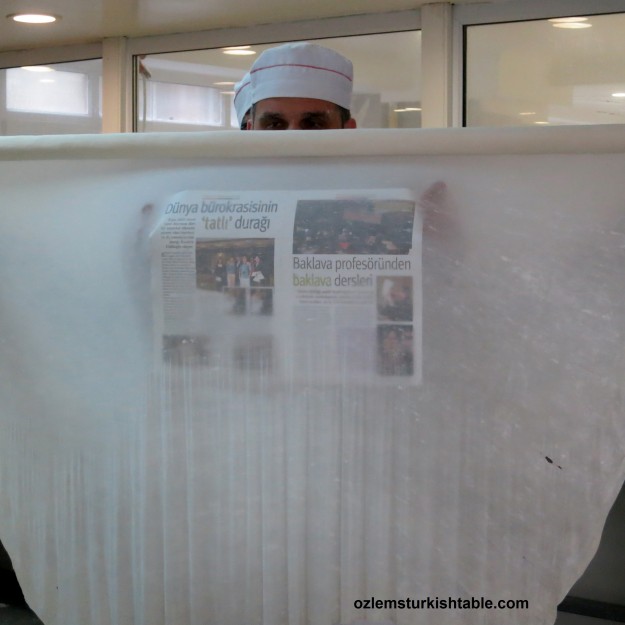
Each sheet of baklava pastry is so thin that you can read the newpaper behind it
Once the pastry is paper thin (2mm width), the Ustas, masters, start layering them on a buttered tray. The hand rolled pastry is so thin that you can read the newspaper article behind the pastry sheet.
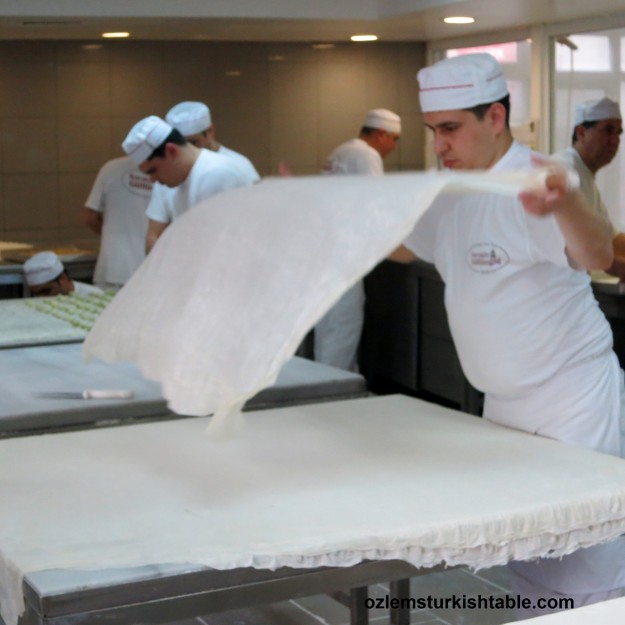
Paper thin sheets of pastries piled to go on a well buttered tray
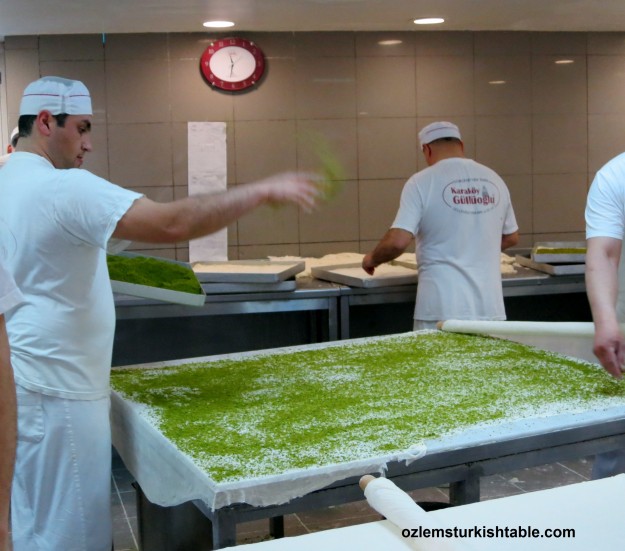
- Emerald colored finest Gaziantep pistachios spread generously on the baklava sheet.
The baklava master layers 20 sheets of pastry ( and sprinkles melted butter on every 4 sheets) then generously spreads finely crushed Gaziantep pistachios – finest and only type used at baklava here- (or at some cases walnuts) on the 20th layer.
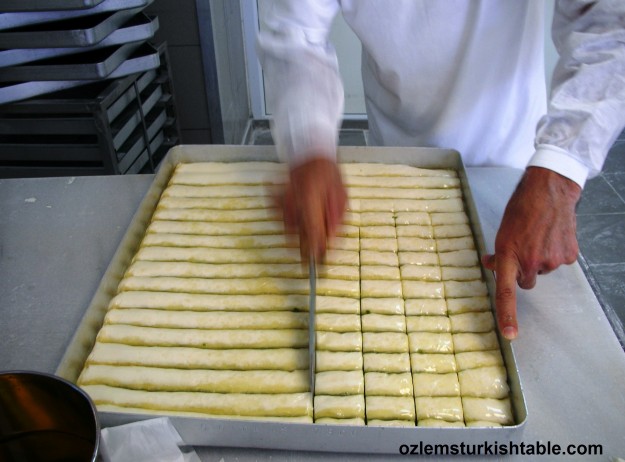
The Usta, master cuts the sheets first horizontally and poured melted butter over them
Once the next 20 layers of sheets added on top, the master, usta cuts the sheets first horizontally and pours melted butter over them – cutting helps the butter to penetrate every level. He then cuts vertically and splashes another dose of melted butter all around. The baklava is now ready to be baked in the oven at 165 C – 330 F.
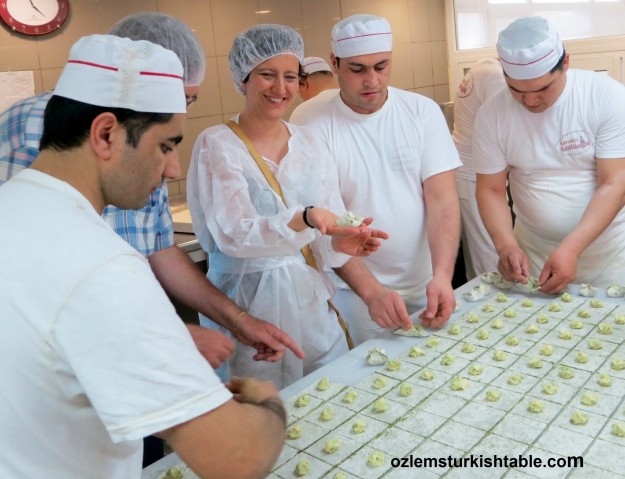
We also had a go at baklava with clotted cream and pistachios; kaymakli, fistikli gelin bohcasi
We also had a go at baklava pockets with clotted cream and pistachios; kaymakli, fistikli gelin bohcasi, another amazing treat.
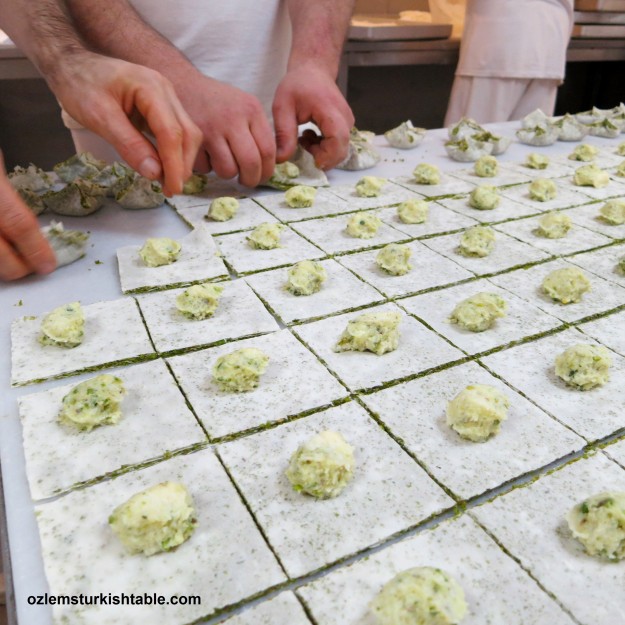
Having a go at fistikli gelin bohcasi; baklava pockets with thick clotted cream, kaymak, and pistachios
While baklava was baked in the oven, the syrup is prepared, consisting of pure cane sugar, lemon juice and water. In Turkey, there is no honey added in to the baklava syrup.
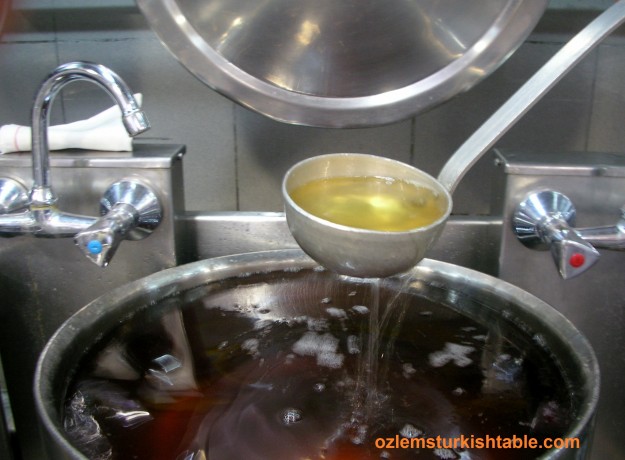
In the traditional baklava syrup in Turkey, there are pure cane sugar, lemon juice and water – no honey in it-
Once cooked, the hot syrup is poured over the relatively cooler baklava, and then baklava tray goes back to the oven for another 5 minutes or so to soak up the syrup. After this, the baklava is rested at a cool area.
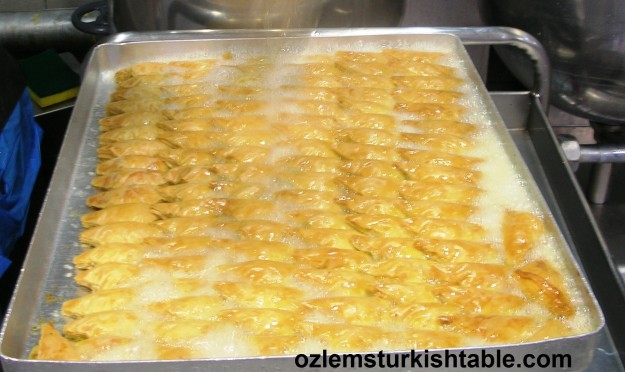
- Syrup poured on baklava; now ready to go back to the oven again
And here is the real thing; wonderful, melt in the mouth delicious baklava. It is so light that you feel like eating ta plateful! I hope you get a chance to try the baklava in Turkey.
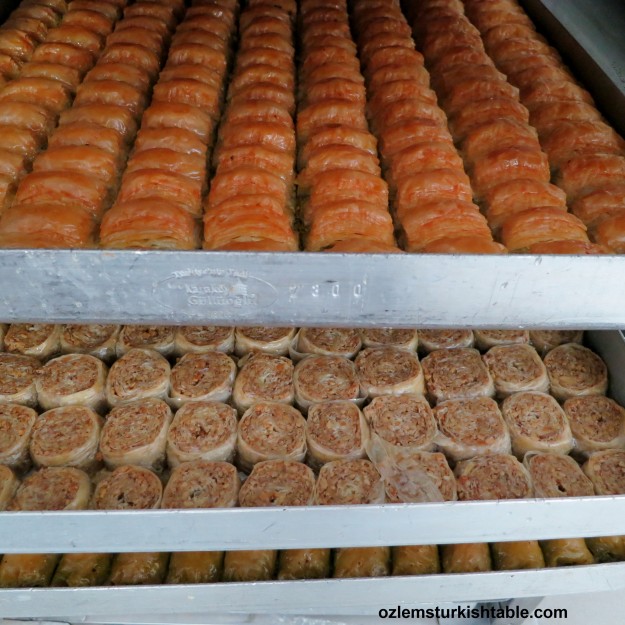
Fistikli ve cevizli baklava; baklava with pistachios and walnuts – what a treat
History of Baklava – Baklava Parade during the Ottomans
There are many theories as to the origin of baklava; but there is one thing for sure, that baklava was perfected at the Topkapi Palace Kitchens during the Ottoman Period and it was the Sultans’ favorite dessert. The importance of baklava at the Palace was not only because it was accepted as the token of wealth and sophistication ( as in the mansion houses) but also because it was a State tradition. The baklava parade that started at the end of the 17th century or at the beginning of the 18th century is example of this tradition.
When soldiers were getting their trimonthly pay from the Sultan, they were offered a big feast and on the 15th day of Ramadan they were treated to baklava. On the 15th day of Ramadan when the Sultan visited Hırka-i Serif (the cloak of Prophet Mohammed kept in Topkapı Palace) as a Caliph , baklava from the palace was sent to the Sultan’s Janissary soldiers. It was one tray of baklava for ten soldiers. The delivery of baklava to the soldiers and carrying the baklava to the barracks had then became an imposing parade.
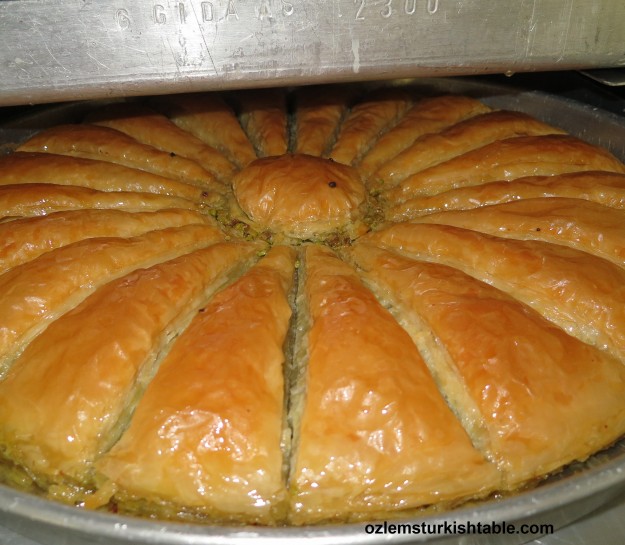
Round tray baklava, cut in triangular slices
Testing the Baklava
Here are some of the tests the masters, ustas at Gulluoglu carries out for a perfect baklava:
Hearing Test
When you place a fork into a baklava you should hear a rustling sound. This means that the thin layers of dough are really thin and baklava is well cooked. The thinner the layers of dough the better the baklava.
Smelling test
When you lift to your mouth, you must smell the butter and the nut or peanut used as a filling. A good baklava should have fine ingredients.
Tasting test
You can feel the good baklava in your mouth. Good baklava leaves a heavenly taste in your mouth and does not hurt the stomach.
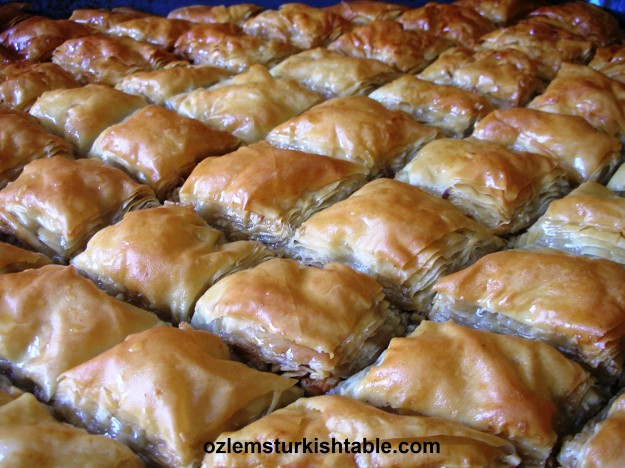
My home made baklava with walnuts; delicious and easier than you think
I hope all these inspire you; would you like to have a go at making baklava at home? I make it with filo pastry sheets; it is easier than you think and very satisfying. My version is a little less sweeter and fragrant with a touch of lemon taste, here is the recipe if you would like to have a go. The real thing shouldn’t be very sweet and heavy; on the contrary it should be light enough to tempt you to eat a small plateful. I think this version achieves that.
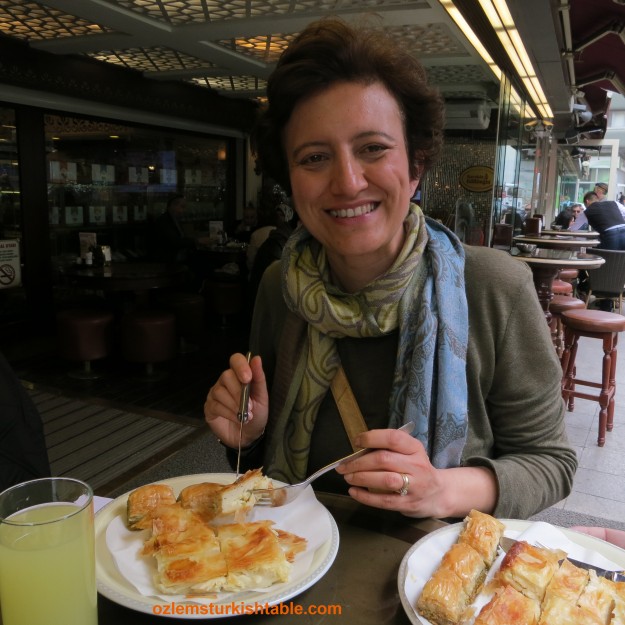
Enjoying boreks and baklavas in Gulluoglu Karakoy, Istanbul
I will be demonstrating how to make baklava at my next Turkish Cookery class, at Central Market Cooking School, Austin – Texas on 2nd August.

- The Blue Mosque, Sultanahmet Camii, Istanbul
9th July marks the start of the holy month of Ramadan this year; best wishes to all observing Ramadan; Ramazaniniz Mubarek Olsun. Baklava is one of the traditional desserts enjoyed during Ramadan, I hope you enjoy this special treat and have a chance to make it at home.

